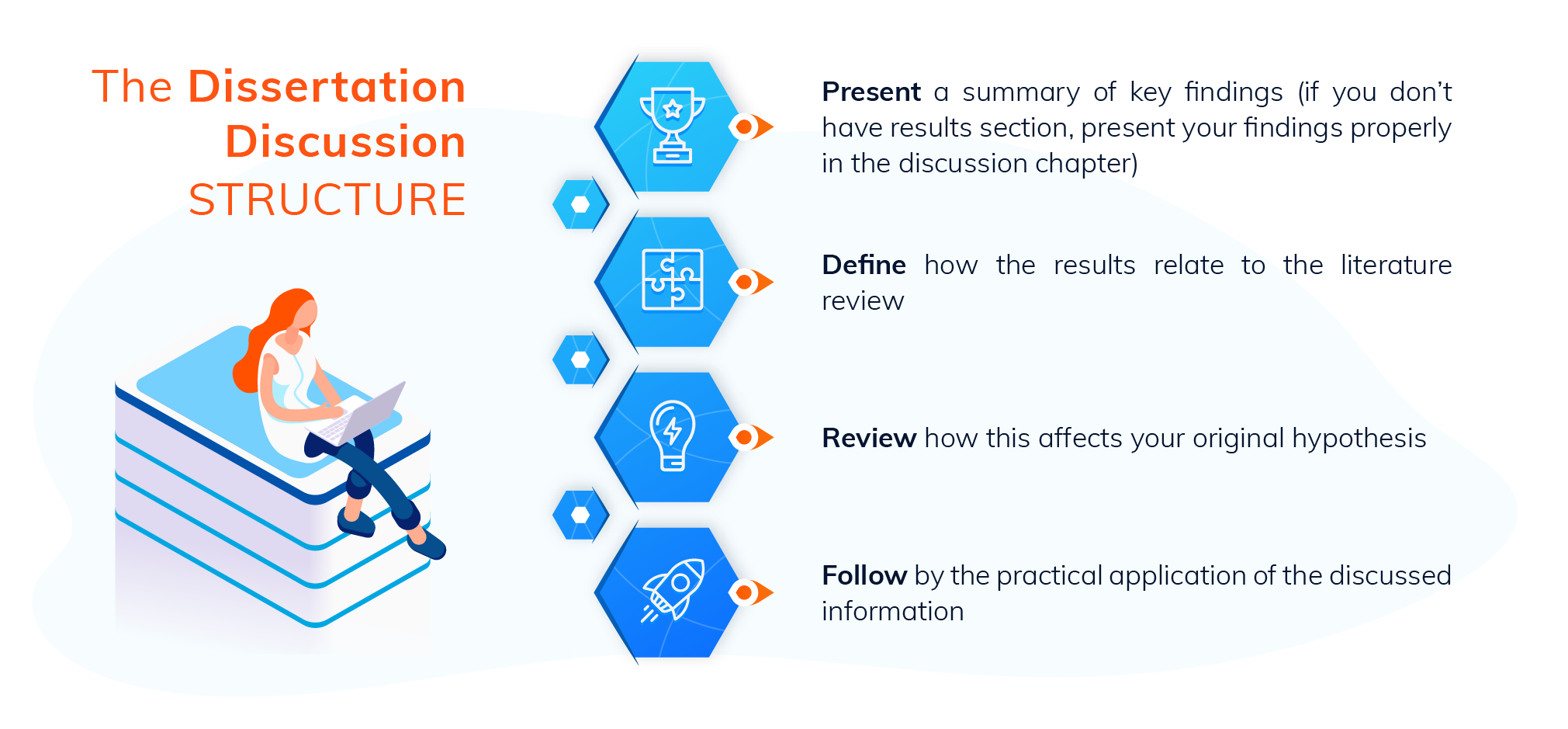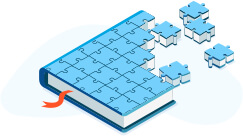Table of Contents
Writing a Successful Dissertation Discussion Chapter
A good dissertation discussion chapter is one of the most important parts of graduate research. Not only does it present the summary of findings but also explains how they confirm or disprove the general knowledge or theories known.
The Discussion Chapter Mission
Many students wonder how to write a discussion section in their papers. Considering that it is one of the most important sections in your paper, it has to be paid close attention to. If you write this section properly, you will give readers clear understanding of why your research is important, as well as clear vision of its meaning. Our article will help you understand how this section has to be written and what information has to be included to make it effective and informative. This section has four objectives, it should:
- Provide an interpretation and evaluation of your results
- Deliver an answer your research question
- Justify the chosen approach and methodology
- Scrutinize your study
What to Write in the Discussion Section?
The discussion section is aimed at answering one simple question, which is: “what is the meaning of my research results?” The discussion section is written after the results section and provides explanation of it. It is directly related to the research question of your paper and is based on the literature review section. In order to make this section interesting, answer the set questions, and explain the results properly, you should include the following information in your discussion section:
- Key findings of your research;
- Their meaning;
- Information on how your results relate to works of other scholars;
- Limitations;
- Indication of things that were unexpected or surprising;
- Recommendations and suggestions for future researches.
What NOT to include into the discussion section:
- New information that was not previously discussed in the paper;
- Irrelevant information;
- Conclusions that are not based on your results.
The Dissertation Discussion Structure
Being a potentially the longest chapter in your work, the discussion needs to have a clear structure, which typically follows the script:

Any dissertation discussion section represents the key findings of the research, so the general practice is to avoid any theoretical referencing unless the results prove the existing theory.
The discussion chapter in a dissertation allows the writer to state their own opinions and interpretations on the paper’s topic, to explain the findings in terms of their implications, and to suggest or recommend further study.
Generally, the discussion section answers any questions posed in the introductory chapter, explains how the findings support these answers, and how the provided answers fit with what is already known on the subject matter or topic.
A discussion chapter should be kept brief. Essentially, this section provides commentary rather than reiterating any results or findings.
The discussion section usually contains the components described below:
- It states the key findings or results of a study in a sentence or two.
- A discussion section should mention the methods used, and address any potential limitations or shortcomings. If or when necessary, answers should be defended by explaining why the writer’s answer is correct and other answers are unsatisfactory. An explanation is only convincing when each side of the argument is examined.
- Any possible weaknesses should be identified in this chapter. Additionally, a commentary should be included on how important these are to the way the writer has interpreted any findings and how these interpretations might impact the validity of the results. Do not be apologetic when discussing possible weaknesses and limitations.
- Answers should be supported with results. Say why your answers and findings are valid and how they compare well to existing knowledge.
- Mention any findings that are unexpected. Begin your paragraph by making reference to what was unexpectedly found and then go on to describe this finding.
- Offer an explanation as to why the findings and conclusions of your research are significant and how they affect existing understanding or knowledge on the subject matter.
- Two (and no more) recommendations for future research are sufficient. You should not suggest any work that could have been undertaken in the current study because this might indicate your research and your interpretation of any findings is inadequate.
Dissertation Discussion Section Example to Read for Free
Tips on Making Discussion Section Effective
Regardless of whether you use APA discussion section or the discussion section formatted in any other writing style, there are universal tips, which will help make it effective and relevant. One of the most important tips is to list the findings of your research from the most important ones to less important. It will help readers concentrate on the most essential issues in relation to your paper and not to lose focus by shifting attention to things that are not of utmost importance. For this reason, it is important to differentiate the findings according to their relevance to your research in order not to miss anything and not to confuse your readers.
How to Begin the Discussion?
If you do not know how to write a discussion section and most specifically how to start it, you should check the research question first. It will help you remind what the central focus of the study was and what information has to be presented in the first turn. The most relevant beginning should contain information, which clearly answers your research question.
Further, you will have to explain how your findings differ or relate to the other similar studies and whether they fit in the existing context of the discussed problem. How do your findings differ from or support previously obtained results? Do you offer some new approach to the problem or just prove the findings of other scholars?
If your findings differ from what people know about the discussed issue, you have to explain why it happened and support your ideas by relevant literature. The reasons for it may be different, starting from some specific approach towards the discussed issue to using different methodology. It may also be connected to the fact that you have performed much broader study, which touched upon additional areas that were not discussed earlier. Besides, it may even be possible that due to your personal vision of the problem, the approaches you used resulted in incorrect outcomes. It may be disappointing but it will also lead to certain conclusions.
So, if you do not know how to write a discussion section, you may use our tips to make it easier for you to cope with your assignment.


What Type of Dissertation Discussion Chapter Writing do You Need?
Based on the type of your research, there are only two basic ways to present the results.
If you have contacted interviews that included numerous open-ended question, you most likely will need a qualitative dissertation discussion chapter. This type focuses on the main takeaway points from each section of the interview. The key here is to embed the quotes from the interview into your text and ideas, rather than randomly throw them in. You do not need to use all interview, but rather focus on those that represent general trend well or stood up.
On the contrary, the quantitative dissertation discussion chapter presents the numbers, percentages and other forms of statistical data. It is important to consider the department your paper will be submitted. In STEM and related disciplines, the enormous amount of data is something we expect, while arts and humanitarian subjects are not so used to it. Remember, that you have to explain why you have asked particular questions and why this information is relevant to your study.

